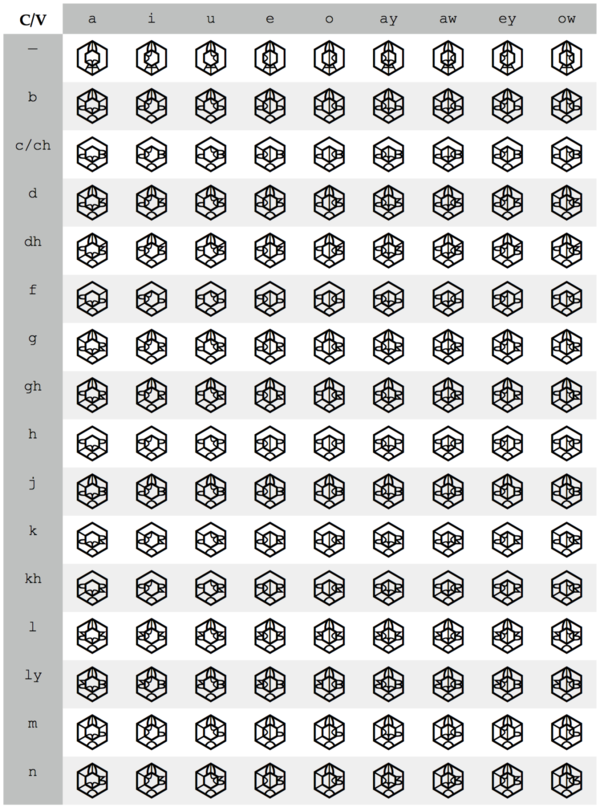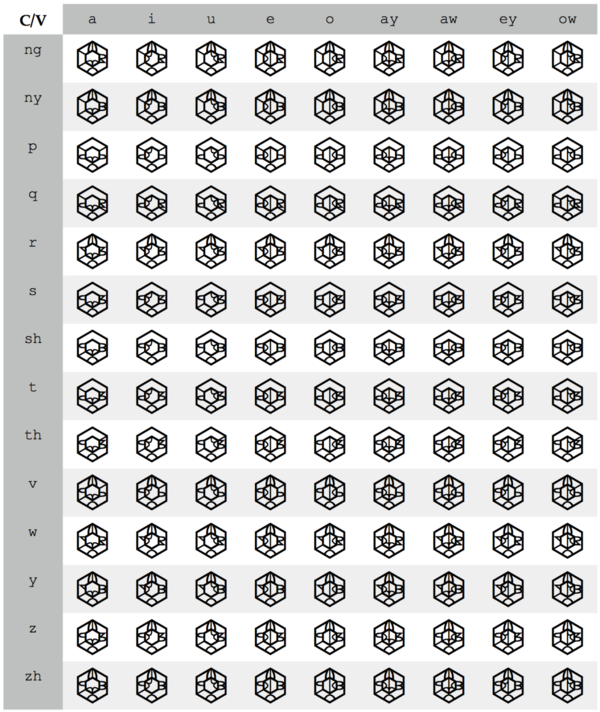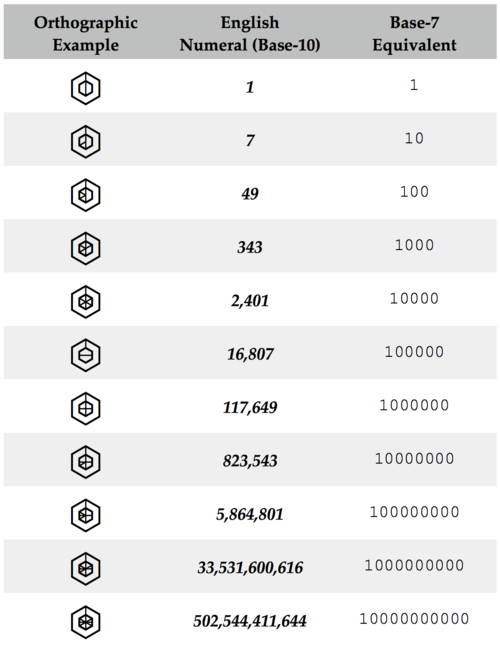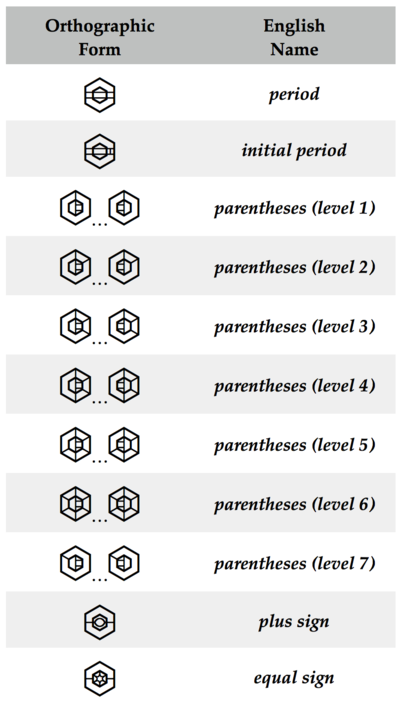Appendix:Indojisnen orthography
Hazugimari is a syllabary used to write the Indojisnen language spoken by the Indogene species from the Syfy series Defiance.
Phonological use
Hazugimari is a featural syllabic writing system. Each glyph represents a syllable, and is hexagonal in shape, with a smaller hexagon within it. A connecting line always bridges the gap between the inner and outer hexagons, representing the presence or absence of an onset consonant. On the other hand, the inner hexagon, containing information about the presence or absence of a vowel in the syllable, may remain blank. This system was intentionally designed by Indogenes based on their exceptional manual dexterity, allowing them to write intricate glyphs like these effortlessly.
The system contains stand-alone vowel glyphs. The outer hexagon of the glyph in this case displays a "voicing hat" on top, and a "vowel stand" on the bottom, indicating the lack of an onset consonant in the syllable. The inner hexagon indicates the quality of the vowel:
These vowel glyphs reveal a featural pattern, making it possible to decipher the system by simple observation. For example, high vowels [i] and [u] are written in the upper portion of the inner hexagon, while the low vowel [a] is written in the lower portion.
However, it is important to note that some sound changes have led to certain vowel combinations having the same pronunciation. For instance, "ay" and "e" are pronounced the same way, as are "aw" and "o." This irregularity is not reflected in the romanization system used for the show, making the Indojisnen orthography slightly less regular than it was initially designed by the Indogenes to be.
The syllabary includes more consonants than those used in Indojisnen, as it's designed to accommodate various Votan languages. Here is the complete set of syllables for Indojisnen, presented in two tables:
Indojisnen includes several diphthongs, such as "suo," meaning "person." In such cases, a vowel glyph is placed after a consonantal glyph to form the diphthong.
Numerals
Here is a brief illustration of the base-7 number system in Hazugimari:
Numbers from 0 to 6 are self-explanatory. For numbers 7 and above, the following 0 is in fact not required, and is typically omitted. The inner hex denotes the power of 7, so when an outer hexagon appears with that particular inner hexagon, it can be deduced to mean 7 without the following 0.
As for numbers beyond 14, there is a set of inner hexagons to represent higher values:
Punctuation
Lastly, Hazugimari includes a few punctuation marks:
The initial period is crucial as it indicates the direction of text flow. While you can write in any direction in Indojisnen, the initial period must be included for the reader to know which direction the text is to be read in.





